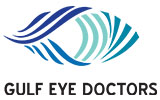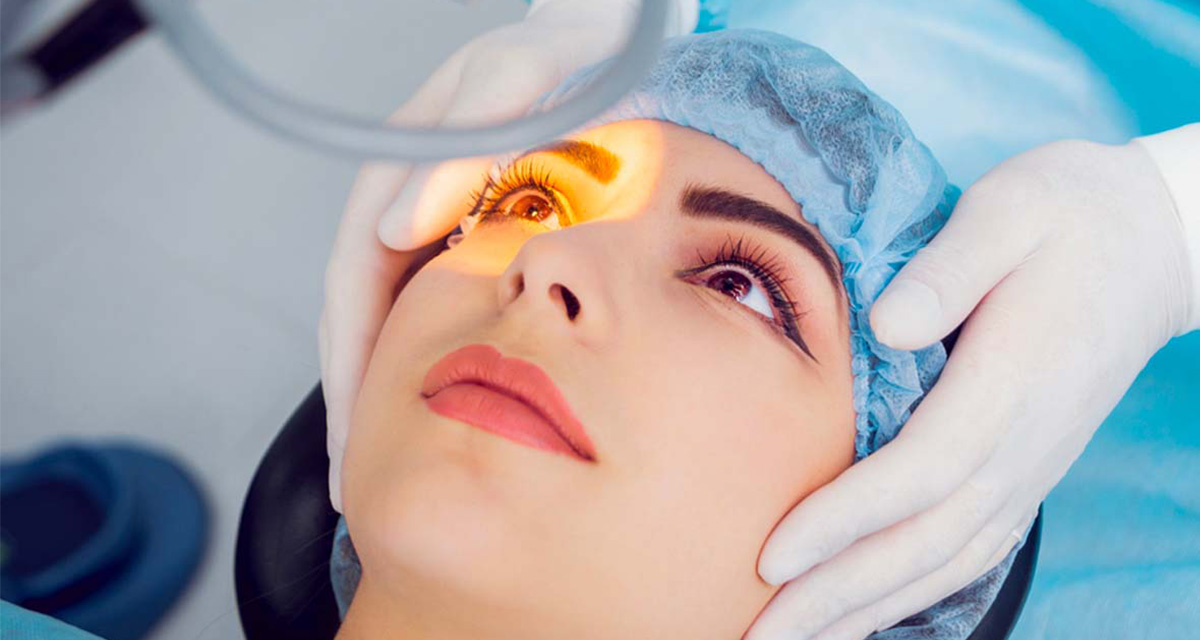Nearsightedness, farsightedness, and astigmatism are refractive errors or vision problems caused by how your eye — specifically your cornea, lens, or both — bends or refracts light.
They may be corrected using non-surgical treatments such as glasses, contact lenses, and also Specialty Contact Lenses. An example of the latter is orthokeratology; with this option, specialists can help treat myopia, especially progressing/worsening myopia in children. Or they may be treated surgically with refractive surgery.
Refractive surgery can be laser-assisted or not. The following are your options when it comes to laser eye surgery in Dubai for refractive error correction:
1. LASIK
LASIK stands for laser in-situ keratomileusis, a laser-assisted refractive surgery used to correct myopia (nearsightedness), hyperopia (farsightedness), and astigmatism in adults above 18 years old with stable refraction.
In LASIK, the doctor uses either a microkeratome or a laser to form a hinged flap at the center of the cornea. After folding the flap out of the way, the doctor uses another laser to remove a precise amount of tissue from the center area of the cornea.
Once the doctor has successfully reshaped the cornea, he repositions the corneal flap and lays it back into place. The flap usually reattaches itself to the rest of the cornea like cling film without the need for stitches.
Benefits of LASIK
LASIK is popular because it causes very minimal downtime. The procedure takes less than 30 minutes. And if you need to have corrective surgery on both eyes, you can usually have the procedure done on both eyes on a single visit.
Recovery is relatively fast, too. While you might feel some discomfort immediately after the procedure, there’s typically minimal pain. This discomfort usually resolves after several hours, and faster if you take a good, long nap after the procedure.
And the best news is that LASIK may help you achieve 20/25 or better vision, and you don’t have to wait a long time to experience it.
2. PRK
PRK is photorefractive keratectomy, a laser eye surgery used to correct nearsightedness, farsightedness, and astigmatism. It uses the same type of laser that LASIK uses, and like LASIK, it reshapes the cornea by removing corneal tissue from specific areas to achieve the correct refraction result.
However, the doctor does not first create a corneal flap in PRK. Instead, he removes the loose surface layer of the cornea. This corneal surface will grow back in the recovery time, conforming to the new corneal shape.
Benefits of PRK
PRK is a short procedure that takes only around 15 minutes. Like LASIK, it has a high success rate in correcting refractive errors, with 95% of PRK patients reporting 20/40 or better vision.
PRK may also be a good alternative for those who are not good candidates for LASIK, such as those who have thin corneas or a corneal surface with irregularities. PRK causes significantly less corneal tissue disruption than LASIK.
PRK may also be better for pilots, those who engage in contact sports, water sports, or anyone whose occupation makes flap dislocation a concern, e.g. Emergency Responders.
Since the doctor abrades the cornea’s surface in PRK, you will feel a moderate amount of pain when the anesthesia wears off and for 1 or rarely 2 days afterward.
3. LASEK
LASEK stands for laser-assisted subepithelial keratectomy, a procedure that can treat myopia, hyperopia, and astigmatism.
It’s a combination of LASIK and PRK. Like in LASIK, the doctor creates a corneal flap before reshaping or flattening the cornea. But Like PRK, only the epithelium or the corneal surface is affected.
The doctor uses a laser to create shallow incisions and exposes the surface of the cornea to ethanol. This loosens the epithelium enough so the doctor can fold it out of the way.
The doctor proceeds, as usual, reshaping the cornea by removing corneal tissue. After that, the doctor replaces the flap, just like he would if it were LASIK surgery.
Benefits of LASEK
LASEK, like PRK, is a better fit for those with thin corneas and other corneal surface issues because it is less disruptive to the cornea than LASIK. And although it can cause dry eyes, it typically has a less drying effect than LASIK.
However, unlike LASIK, LASEK can cause more pain and discomfort than LASIK. It may also take longer for your vision to stabilize and for your eyes to recover than in LASIK surgery, although LASEK’s recovery period is typically shorter than PRK.
4. SMILE
SMILE is small incision lenticule extraction, a laser refractive surgery that may be used to treat myopia and astigmatism.
In SMILE, the doctor creates a “lenticule,” a disc of corneal tissue beneath the cornea’s surface. Next, the doctor makes an incision at the periphery and extracts the disc. The removal of the disc effectively reshapes the cornea.
Benefits of SMILE
SMILE does not involve corneal flap creation, as in the case of LASIK and LASEK, nor the abrasion of the corneal surface as in the case of PRK. As such, there’s no risk of corneal dislocation, a lower risk for dry eyes, and less eye pain than PRK.
However, it has more restrictive conditions than other refractive eye surgery. For instance, doctors will use it to treat myopia if it’s between -1 and -10 and astigmatism of up to 3 diopters.
Which Laser Surgery Is Right for You?
LASIK is undoubtedly the most popular. It also causes minimal discomfort and pain, allows for a speedy recovery, and provides better vision faster. However, the relatively thick flap creation and significant corneal disruption may exacerbate eye dryness.
PRK creates less disruption because there’s no cut-away flap. There’s also no risk of corneal flap dislocation. However, the abrasion of the corneal surface leads to more pain. Recovery and vision improvement also takes longer.
LASEK provides a compromise between LASIK and PRK. While it creates a flap, it is thinner, so there’s less disruption to the cornea. Like PRK, this is an option if you have a thin cornea, which is contraindicated in LASIK.
On the other hand, SMILE reshapes the cornea without opening it up through a flap or abrading the surface. Thus, it is a better option for those who have dry eyes, but only if their level of myopia and astigmatism falls within the required range.
The Best Eye Laser Operation in Dubai
Laser eye surgery provides an effective and convenient way of correcting refractive errors. And you have many options when it comes to eye laser treatment in Dubai. However, the best laser surgery in Dubai or anywhere else is the one that your doctor prescribes after giving your eyes a thorough checkup.
And if refractive surgery is not for you, there are non-surgical alternatives. For instance, myopic children may try orthokeratology lenses. Dubai orthokeratology clinics have orthokeratology specialists that you can consult on whether or not orthokeratology myopia control is a good fit for you or a loved one.
Whether you’re considering eye laser treatment, orthokeratology lenses, or other modes of refractive error treatment, book a consultation with our ophthalmology clinic in Dubai.





One comment
Laurianne Williamson
January 25, 2018 at 9:35 am
Et dicta suscipit quam neque qui. Tenetur laudantium quia quia quas. Voluptatem veniam aut consequatur dolor. Veniam et officiis aut aliquid ad.